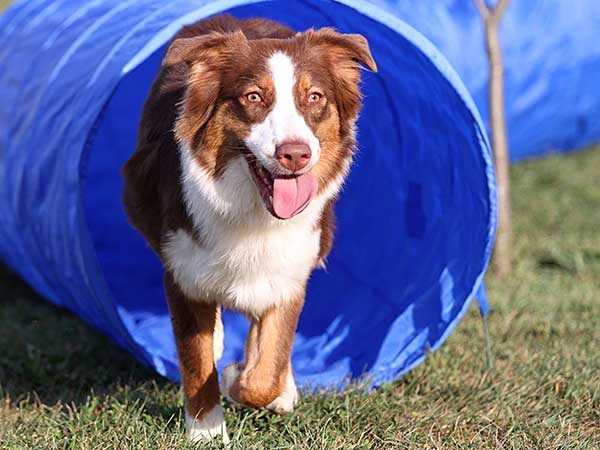
Canine Hip Dysplasia And Dog Agility Training
Canine Hip Dysplasia (CHD) is a very common condition in dogs that is both progressive and incurable. It is more common among larger breeds that carry more weight on their hip joints, but it can occur in almost any breed. Dogs that are overweight or don't get enough exercise tend to have more problems with dysplasia than physically fit dogs, but again the condition can present in almost any dog.
Dysplasia is defined as an inability of the hip joint to develop as it should. The result of this improper development is a joint that does not sit properly, making walking, running, jumping and any other strenuous activity painful. Dogs with dysplasia may walk with a hobble or whimper when they put weight on the affected leg. Dysplasia can only be properly diagnosed by a trained veterinarian, so if you suspect your dog may be suffering from it you should have him examined right away.
Because canine hip dysplasia can affect a dog's ability to walk or run properly, it can be a significant issue for those who participate in agility training. Since agility work naturally involves a dog running, jumping, weaving and climbing at full speed it might be assumed that dogs with dysplasia would be unable to participate safely, but this isn't necessarily the case. In fact, since regular participation in agility training can help to develop the muscles, thereby taking some of the stress off of affected joints, it can actually be beneficial to dogs with dysplasia.

gregg williams / stock.adobe.com
On the other hand, while agility training in itself doesn't cause dysplasia, the repeated full throttle motions involved can possibly exacerbate existing cases of the condition. Dogs don't have an off switch so they will continue to give it their all, often despite being in considerable pain. And because they can't talk, they can't let us know when they are experiencing pain or discomfort. It is up to the handler to be aware of his dog's condition and take any necessary precautions to avoid serious injury.
Canine Hip Dysplasia Doesn't Mean The End Of Your Dog's Agility Training Career
So where does all this leave dog owners who are involved in agility training? Does a diagnosis of canine hip dysplasia necessarily mean you have to call your dog's agility career quits? The answer is no, not necessarily. While it is important to be aware of any existing dysplasia, it may be possible to continue your training without hurting your dog, provided you proceed carefully.
Once your vet has made a diagnosis, he can discuss the specifics of your dog's health with you. Not all cases of dysplasia are the same… some are more severe than others. In less severe cases, there are steps you can take to relieve your dog's pain and improve his overall health so that the condition doesn't develop too quickly. Non-steroidal anti-inflammatories and natural supplements have all been used successfully to manage pain.
Regular exercise can actually help to keep your dog's weight in a healthy range and develop the muscles, which can take some strain off of affected joints. Agility training is not necessarily forbidden in dogs with canine hip dysplasia, but if you know your dog has the condition you should remain aware of his health at all times and stop training at the first signs of distress. With the proper approach, your dog can live a long, healthy and pain free life doing the things that he loves.
American College of Veterinary Surgeons: Canine Hip Dysplasia
Have Dog Training Questions?
Check out these introductory dog training videos...
I want my dog to stop being aggressive.
I want some help training my new puppy.
I want my dog to stop barking at everything.
Get Australian Shepherd Info, Website Updates, Special Offers, and Cartoons...
FREE GIFT
You'll also receive a free copy of the ebook
My Everyday Dog Training Tools
by professional dog trainer Daniel Abdelnoor, "Doggy Dan"










 Loading Image...
Loading Image...